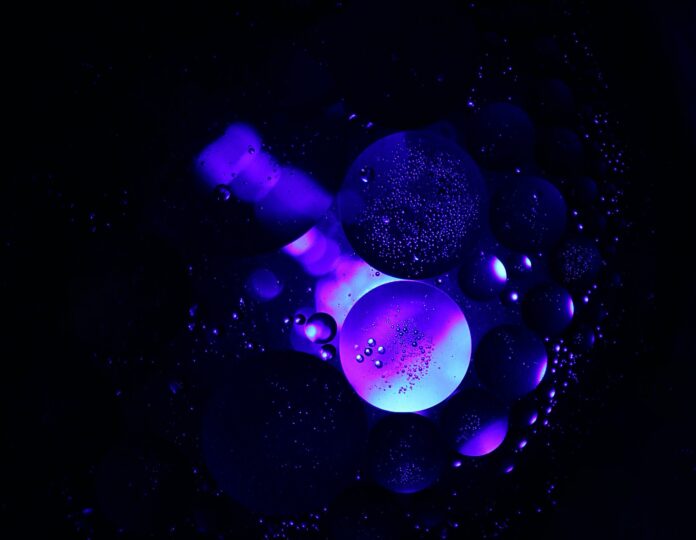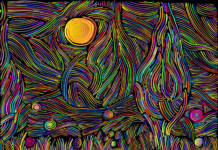Squalane is a remarkable hydrocarbon compound that has garnered significant attention in the realms of skincare, cosmetics, and pharmaceuticals due to its unique properties and diverse range of applications. Derived from squalene, a naturally occurring lipid found in human sebum and certain plant oils, squalane is a stable and saturated form of this molecule. Its molecular formula, C30H62, highlights its structure, consisting of 30 carbon atoms and 62 hydrogen atoms, making it a long-chain hydrocarbon. This substance possesses several exceptional characteristics, including its emollient nature, lightweight texture, and compatibility with various skin types. Its significance stems from its ability to moisturize, protect, and rejuvenate the skin, making it a key component in numerous skincare products. Throughout this comprehensive exploration of squalane, we shall delve into its origins, production methods, chemical properties, and diverse applications in both cosmetic and non-cosmetic domains.
The history of squalane dates back centuries, with its initial discovery in the livers of sharks, where it was first identified and extracted. The term “squalane” is derived from “squalus,” the Latin word for shark. However, today’s production of squalane has shifted away from shark-derived sources due to environmental concerns and the potential impact on marine ecosystems. Instead, squalane is now commonly sourced from plant-based oils or obtained as a byproduct of squalene extraction from botanical sources like olives, rice bran, and sugarcane. The switch to plant-derived squalane has not only mitigated environmental concerns but also ensures a sustainable and cruelty-free approach to its production.
The process of extracting squalane involves hydrogenation, which converts the unsaturated squalene molecules into the fully saturated squalane form. This hydrogenation process confers excellent stability to the resulting squalane, making it resistant to oxidation and rancidity. Consequently, squalane exhibits a longer shelf life compared to squalene, ensuring its efficacy and safety in various formulations. Moreover, the hydrogenation process imparts exceptional compatibility with human skin, as squalane closely resembles the skin’s natural lipids, making it less likely to cause irritation or adverse reactions.
Chemically, squalane is characterized by its straight-chain structure, consisting of a series of single covalent bonds between carbon atoms. This molecular arrangement not only contributes to its stability but also its ability to penetrate the skin’s surface without leaving a greasy residue. As a result, squalane is frequently praised for its lightweight and non-comedogenic properties, making it an ideal moisturizing agent for all skin types, including oily and acne-prone skin. Its non-irritating nature has also led to its use in sensitive skin formulations and as a carrier oil for essential oils.
In the realm of skincare, squalane’s benefits are extensive and diverse. Its primary function lies in its exceptional moisturizing ability. As it forms a protective barrier on the skin’s surface, it helps prevent moisture loss, promoting hydration and preventing dryness. Additionally, squalane’s molecular structure enables it to enhance the absorption of other skincare ingredients, making it an effective carrier for active compounds in various formulations. This property further amplifies its usefulness as an ingredient in serums, moisturizers, and anti-aging products, where it can deliver powerful actives deep into the skin’s layers.
Furthermore, squalane’s natural antioxidant properties aid in neutralizing harmful free radicals, which are a major contributor to premature aging and skin damage. By combating oxidative stress, squalane contributes to skin protection and can assist in maintaining a youthful and radiant complexion. Its anti-inflammatory attributes further bolster its skincare credentials, as it can help soothe and calm irritated skin, reducing redness and sensitivity.
Apart from its cosmetic uses, squalane finds applications in the pharmaceutical industry as well. Due to its biocompatibility and low potential for skin irritation, pharmaceutical companies use squalane as a carrier oil in drug formulations for topical delivery. Its ability to enhance the skin’s permeability allows for efficient absorption of medicinal compounds, increasing the efficacy of various dermatological treatments. Additionally, squalane’s stable nature and lack of color, odor, and taste make it an ideal excipient in pharmaceutical products.
In recent years, squalane has also been explored for its potential in hair care products. The lightweight texture of squalane makes it an attractive option for hair serums and leave-in treatments, as it imparts shine and softness without weighing the hair down. Squalane’s ability to fortify the hair’s cuticle layer contributes to overall hair health, making it an ingredient of interest for those seeking to improve the appearance and manageability of their tresses.
Squalane stands as a multifaceted and highly versatile compound that has found its way into numerous industries, particularly skincare, cosmetics, and pharmaceuticals. With its origins traced back to shark liver oil, squalane has evolved into a sustainable and ethically sourced ingredient, derived predominantly from plant-based oils. Its exceptional stability, compatibility with human skin, and various beneficial properties have earned it a prominent place in skincare products, where it serves as a powerful moisturizer, antioxidant, and anti-inflammatory agent. Additionally, its applications extend to pharmaceutical formulations, where it aids in the effective delivery of medicinal compounds. As research continues, squalane’s potential in diverse domains may continue to expand, solidifying its position as a valuable and sought-after ingredient in the realms of health, beauty, and wellness.
In recent years, squalane has gained widespread popularity and recognition in the beauty industry for its natural and eco-friendly attributes. As consumers become increasingly conscious of the environmental impact of their choices, the shift toward sustainable and cruelty-free skincare products has led to a surge in the demand for squalane-based formulations. This, in turn, has encouraged skincare brands to incorporate squalane into their product lines, capitalizing on its myriad benefits and positive reputation among consumers.
One of the remarkable aspects of squalane is its versatility, allowing it to be seamlessly integrated into various skincare formulations. Whether used as a stand-alone moisturizer, a carrier oil for essential oils, or as a vital component in anti-aging serums and creams, squalane adapts to different formulations without compromising its efficacy. Its ability to provide intense hydration without leaving a heavy or greasy feel on the skin has made it a staple ingredient in lightweight and fast-absorbing moisturizers, catering to those with diverse skin types.
Moreover, squalane’s non-comedogenic nature makes it an attractive choice for individuals struggling with acne-prone or oily skin. By balancing the skin’s sebum production and preventing clogged pores, squalane offers a non-irritating and acne-friendly option for maintaining healthy, blemish-free skin. Its soothing properties are also beneficial for those with sensitive or reactive skin, as it helps alleviate redness and inflammation, providing relief to irritated skin conditions.
Beyond its topical benefits, squalane has garnered attention for its potential to enhance the overall health and appearance of nails and cuticles. As it can strengthen the nail beds and promote hydration, squalane-based nail products have emerged as a nurturing solution for brittle and damaged nails. Additionally, squalane’s emollient properties extend to lip care products, where it aids in combating chapped lips and maintaining a smooth and supple pout.
While squalane’s contributions to skincare are vast and well-established, its potential applications continue to expand into other domains. In the realm of biotechnology, squalane’s biocompatibility has led researchers to investigate its use in novel drug delivery systems. Its ability to encapsulate and transport therapeutic compounds holds promise for more effective and targeted drug administration, potentially revolutionizing the pharmaceutical landscape.
The culinary world has also taken an interest in squalane, albeit in a different form. Squalane derived from olives has found its way into the culinary arena as a gourmet oil, prized for its high smoke point, mild flavor, and healthful attributes. Used in cooking and as a finishing oil for salads and dishes, olive-derived squalane has carved a niche for itself among food enthusiasts seeking healthier alternatives to traditional cooking oils.
Despite its many benefits, it is essential to note that individuals with specific allergies or sensitivities may still experience adverse reactions to squalane. While squalane is generally well-tolerated, performing a patch test before using squalane-based products can help identify any potential allergic reactions or sensitivities.
As squalane continues to gain momentum in various industries, it is crucial to maintain responsible and sustainable sourcing practices. The conservation of sharks and marine ecosystems remains a pressing concern, making it imperative to prioritize plant-derived squalane over its animal-derived counterpart. The beauty industry’s efforts to shift away from shark-derived squalane and adopt eco-friendly alternatives demonstrate the significance of sustainable practices in preserving the planet’s natural resources.
In conclusion, squalane stands as a remarkable and multifaceted compound with diverse applications in skincare, cosmetics, pharmaceuticals, and beyond. Its origins rooted in shark liver oil have evolved into an eco-conscious and ethical approach, predominantly relying on plant-based sources for its production. With its exceptional moisturizing, antioxidant, and anti-inflammatory properties, squalane has cemented its position as a highly sought-after ingredient in the world of beauty and personal care. Furthermore, its potential applications in drug delivery systems, culinary uses, and other industries hint at a promising future for this versatile hydrocarbon. As scientific research continues to unveil new facets of squalane’s capabilities, its status as a beloved and invaluable component in health, wellness, and beauty is likely to persist, making it an enduring and influential presence in our lives.






















